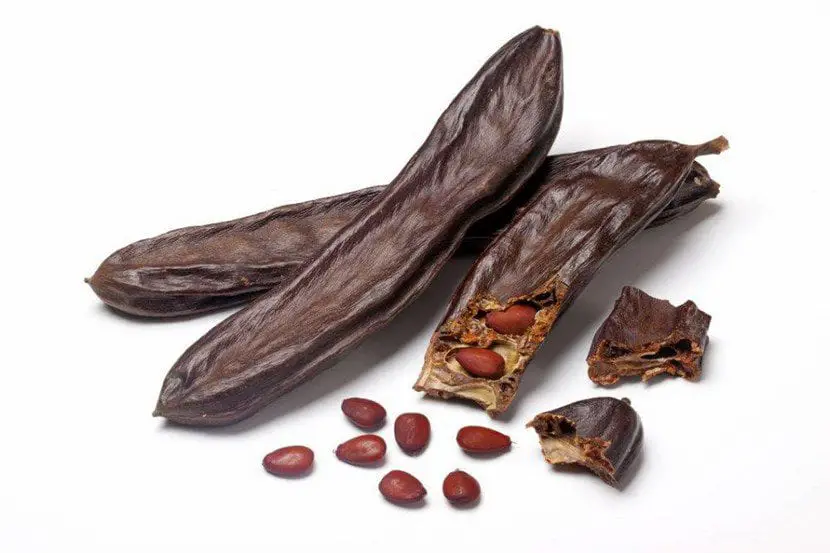

The carob tree, whose scientific name is Ceratonia siliquais a fruit tree native to the Mediterranean region capable of growing in places where other plants would have many difficulties. It produces fruits even in poor soils, with a tendency to erosion due mainly to the lack of rainfall, and if this seems little to you, you should know that it supports a wide range of temperatures.: from -10ºC minimum to 40ºC maximum. Interesting, don’t you think?
Well, there is still more. There are different types of carob. And, although they all seem the same to us, in reality there are small but important differences between some varieties and others. Find out what they are.
The carob varieties are classified according to the type of flower, which can be hermaphroditic, female or male.
Varieties with hermaphrodite flowers


Known as male garrofero, borroses, ondaes, or floridor mascle among other names, they are characterized by having a not very dense crown, with thick, dark leaves and with little brightness. The best known types of carob with hermaphrodite flowers are:
- Water bottle: it is an open-weeping tree whose locust bean yield is high, between 13 and 15%. Harvested in late summer / early fall (September in the Northern Hemisphere).
- Bouquet: it is a weeping tree that produces a large quantity of fruits, with a lot of cellulose and a low sugar content. It is harvested in autumn (October in the Northern Hemisphere).
Varieties with male flowers
Known as borders or borts, they are characterized by having a large bearing, with a crown formed by short branches hidden by large dark green leaves. They do not bear fruit and are more sensitive to cold than the rest.
Varieties with female flowers


They are the most appreciated. In Spain we are lucky to have a great variety, such as these:
- Bravia: it is a variety that grows in the mountains of the province of Malaga. It is a medium-sized tree, whose carob is dark brown in color. This is 12-14cm long and is harvested in autumn.
- Castilian: it is a variety that is grown mainly in Eastern Andalusia. It is a large tree, very leafy and weeping, with a high production. The fruits are dark brown, wide, thick and between 10 and 17cm long. It is harvested in early autumn.
- casuda: it is an open-erect tree widely cultivated in the south of Castellón and Valencia. The harvest season is early fall (mid-September in the Northern Hemisphere).
- Golden rib of the Channel: the tree is indigenous to the island of Mallorca. It has a crown with few branches and leaves, which are large, more or less rounded and dark green. The carob is light brown in color, not very sugary. It is 18-22cm long and is harvested in autumn.
- Goat horn: also known as Banya de Cabra, it is a vigorous tree, with a leafy crown and large leaves. The pulp is sparse and has an unpleasant taste. It is harvested in early fall.
- Black or Black: is the name it receives in the regions of Barcelona, Tarragona and Castellón. It is characterized by being a lush, large, and vigorous tree. The carob is black, shiny, with a length of 12 to 16cm. The pulp is white, with a sweet taste. It is harvested in autumn (October in the Northern Hemisphere).
- Royal: it is a large tree, with a dense crown formed by dark green leaves. It is sensitive to rapid drops in temperature, but it resists some diseases such as powdery mildew. It is harvested in early fall.
- tendral: it is a semi-weeping tree with dense, light green foliage. It is sensitive to diseases such as powdery mildew, but recovers easily from pests such as mealybugs. It produces a large number of fruits, whose average length is 15 to 17cm, which are collected in autumn.


Did you know these varieties of carob? You have someone?
